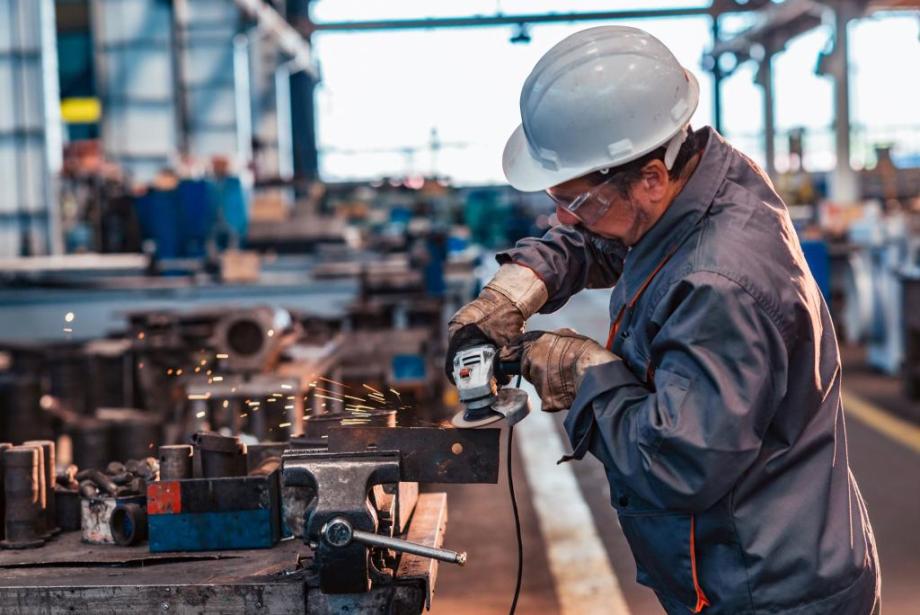What are airborne hazards?
As a business operating in the manufacturing sector, you’ll know that potential risks can come from many areas. One area that poses a significant risk is contamination from airborne hazards. We look at what can constitute an airborne hazard and how you can manage them in your business.
Airborne hazards refer to any contaminant or potentially toxic or carcinogenic substance that resides in the air. These can include gases and vapours such as carbon monoxide, acetone, and ethanol. Fibres like asbestos and glass, mists, fumes or even dusts like flour dust can all be considered airborne hazards.
Sources of airborne hazards include:
- Rotating tools and parts e.g., sanders, circular saws, drills
- Hot processes like furnaces, soldering, wielding
- Transferring powders, abrasive blasting, mixing spray paints
- Fracturing solid materials e.g., crushing rock
- Abrasion for example sanding, grinding, polishing
- Cleaning and waste handling
People working in the manufacturing industry along with others could potentially experience exposure to these contaminants throughout the day.
Over an eight-hour workday, an average person can inhale more than 3,000 litres of air and in many workplaces, this air contains contaminants from workplace activities. Although particle size and chemical composition can influence the effects of contaminants, long exposure to them can overwhelm the body’s defence mechanisms and can potentially cause or worsen diseases like asthma, COPD, mesothelioma, respiratory cancers, or silicosis.
Managing Exposure to Airborne Hazards
There are multiple measures you can put in place to manage the exposure to your employees. Based on information by YouTalk Insurance, SocoTec and WorkSafe, let’s take a closer look at a few.
1. Identification of hazards
The first thing you can do to manage the risk of airborne hazards is to identify the source of them. The different tasks and processes within the workplace should be reviewed along with technical information sources like:
- Product labels
- Safety data sheets
- User manuals
- Product suppliers
2. Controlling the risks
Reducing the concentration of the contaminants in the air is more effective than just using Respiratory Protective Equipment (RPE) such as filtering facepieces and full-face masks. To reduce concentration and therefore exposure to contaminants you could:
- Use a safer form of the product, for example, could a solid powder be used in solution or paste form?
- Modify the process to generate or emit less of the substance.
- Substitute currently used products with less hazardous products. This is one of the most effective ways of eliminating or reducing exposure to products that are hazardous or toxic g., replacing paints containing lead with those containing non-leaded pigments.
- Employ local exhaust ventilation (LEV) for your operations. LEV is used to prevent or reduce the level of airborne hazardous substances being inhaled by people in the workplace.
3. Isolation
Another useful way to reduce exposure to airborne hazards is by enclosing the work process or substance, for example by using fume hoods. This means the contaminant does not escape into the air and in turn reduces the concentration. Alternatively, work processes involving airborne hazards could be done outdoors if possible, or as far away from other workers as possible.
4. Health Monitoring
Under the control of substances hazardous to health regulations (COSHH), employers are required to assess the risk to health associated with exposure to hazardous substances. The objective of this is to protect employees by collecting data for detecting or evaluating health hazards and control measures. Health monitoring could include:
- Consultation with a registered medical practitioner
- Clinical tests
- Physical Examinations
5. Maintaining and Regularly Reviewing Controls
Managing the exposure doesn’t just stop at putting control measures in place. They must also be maintained and regularly reviewed. Local exhaust ventilation and PPE are two of the most common measures where maintenance is vital. Considerations could include:
- How often will you check the control measures?
- Are there better measures that could be put in place, or could replace old ones?
- Are your employees using the correct control measures when required?
No matter what techniques you put in place to manage your employees’ exposure, using a combination of measures is usually more effective than just one. This means not only covering one of these areas but formulating a broader risk management plan to protect your employees from harm.
Talk to our experienced advisers today to arrange a review of your risk management plans. You can call us on 01480 272727 or send us an email at enquiries@barnesinsurancebroker.co.uk and we’ll be pleased to assist.



